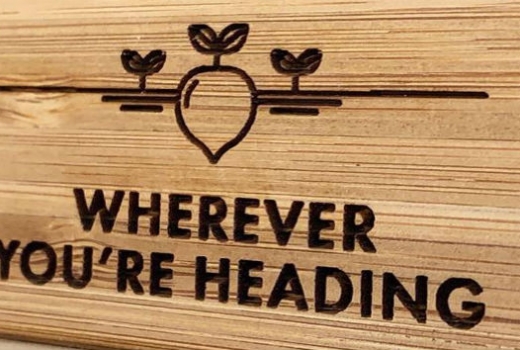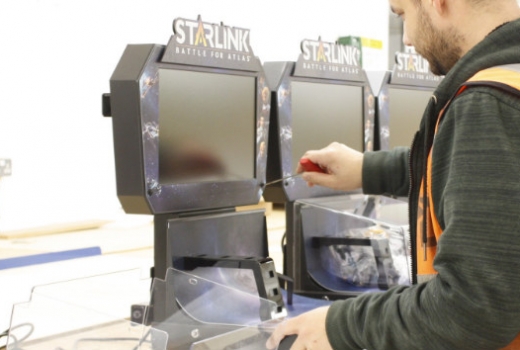Eco-friendly OR Environmentally Friendly OR Sustainability for POS?
The environmental conundrum
We hear so much about the importance of being environmentally friendly and making better choices. And most people I think are concerned about their impact on the earth. But what we find as we try to make better environmental choices is that it isn’t quite as simple as all that. In this article we aim to clear up some of the confusion involved in making eco-friendly choices.
For years we thought recycling was the answer to it all. We could buy and use any amount of plastic as we can just pop it in the recycling bin after and have a clear conscience. That was, until the reality came to light that we were off loading huge amounts of our recycling waste to China and other countries, and that much of our recycling was in reality ending up in landfill or in the rivers and seas. Suddenly recycling plastic was not the simple eco-friendly choice we once thought it was.
This has led many consumers to attempt to use less plastic. Riverford, the organic veg box delivery company, deliver their fruit and veg to around 47,000 homes each week, primarily in cardboard packaging. For the customer trying to reduce the amount of single-use plastic they use, this sort of scheme seems like a good idea. Yet Riverford’s founder Guy Singh-Watson has said that “The fervour – the almost religious fervour – of some of our customers in (being) anti-plastic can actually create problems. Plastic is not in itself an evil material, it is the fact that we use so much of it. The biggest environmental challenge facing our planet is climate change – and anything that distracts attention from that is potentially dangerous”. His advice is companies should focus less on plastic and address energy efficiency or reducing their carbon footprint in other ways. Singh-Watson points out that paper can actually have a higher carbon footprint than plastic, so switching from plastic to cardboard isn’t always the best environmental choice.
In the bid to be responsible eco-friendly consumers and reduce the number of plastic bottles we see floating about in our oceans, customers are paying more money for less product to get it in glass rather than plastic (think of those small glass Heinz ketchup bottles compared to the family size squeezy ones). Yet glass creates more than six times the global warming gases than plastic, and uses twice as much energy to produce. Plus it’s heavier to ship. Though glass jars and bottles can be re-used for years within the home for other purposes. So which is the better choice in this instance?
Perhaps you change your brand of chocolate spread from one in a plastic jar to one in glass, only to find out that your new brand contains palm oil and you are now contributing towards to the felling of rainforests and the threat of extinction of orangutans. What’s more important, the reduction of plastic or the reduction of palm oil? Or after much searching you source a palm oil free product (which feels like somewhat of an achievement when palm oil is so pervasive in our everyday products), to then read that the alternatives to palm oil could cause even more deforestation than palm oil production itself.
Making what seems like a good choice, suddenly opens up a whole new can of worms and can leave us feeling confused.
Is it better to buy loose produce in the supermarket though the level of waste is higher as it doesn’t last as long and retailers have to throw it out, or is it better to buy fruit and veg wrapped in plastic and cellophane that often can’t be recycled but the food lasts longer and so the waste levels are lower.
Are locally produced socks made from cotton – one of the world’s biggest polluting materials – better than ethically produced bamboo socks that will be shipped from China? Is the shipping distance environmentally better or worse than the impact of the material choice?
Within the POP display industry we see these sorts of issues first hand when working with our clients. Wood isn’t recycled as a general rule once it has been used for POP, but the wood itself comes from a sustainable source. So is that a good environmental choice or a bad environmental choice? HIPS is a plastic we commonly use within our POP displays. But it’s a type of plastic so it must be bad, right? But it can be easily recycled and reused, so is it actually a good choice for the environment?
We use a lot of cardboard within our more temporary display units and for our customers, using cardboard can often seem like an easy solution to ensuring a POP unit can be recycled at the end of its life. But if the material isn’t up to the job in hand it could mean having to replace the POP unit which would involve additional transport, storage, more production time and cost, and more waste. In this instance, would this actually be the environmentally friendly choice?
And what do we mean when we say we want to be environmentally friendly? Is that the same as eco-friendly? Do we mean we want to recycle more? Is recycling the answer or should we be reducing our waste as a priority? What does sustainability really mean?
Is Eco-friendly the correct term?
The answers are not always clear cut, but we can help in part. Eco-friendly means to not do harm to the planet, so it is essentially the same as environmentally friendly in meaning. It’s a pretty wide concept and can encompass many things such as a material’s toxicity, its recyclability, or its production processes. Sustainability is more precise, it has been defined by the United Nations as activities that do not compromise the ability of future generations to meet their needs. However, this includes environmental, social and economic elements, so a lot can be covered by the one word. Ultimately it is about not using too many resources or creating more pollution.
When designing a display unit go in with a clear plan of your end goal. Choose your materials to ensure you can recycle them at the end-life of the display. This means you need to take consideration of the printing you do on the display, and don’t use stickers that can’t be removed. In terms of the materials you use, if cardboard won’t have the longevity or strength you need HIPS is very easily recycled, or for a stronger, longer life unit, rigid paperboard is a great alternative to MDF that uses water-based adhesives which are eco-friendly and can be easily recycled.

Key takeawayEvery choice we make in the course of our work or in our role as consumers has an environmental impact in some way. The answers are not always clear cut, but asking the questions to begin with means we are thinking about it and trying to make a change which can only be a good thing. Understand where your materials come from, how they are produced, and what happens to them at the end of their use. Talk to your design company, get their input and advice to co-create your display in the best possible way. Know what you want to do with your display at the end of its life before you start the design process, in this way you can plan to ensure that your display unit meets your aims and help you make sustainable, environmentally friendly choices.


